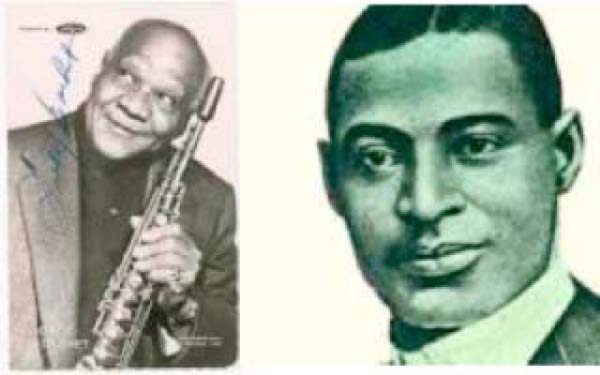
As
we celebrated the end of Jazz Appreciation Month which ended with the
celebration of International Jazz Day we want to take this opportunity to share
with our esteem readers a brief history of jazz.
We
begin with a synopsis of the history of jazz in order to put it in proper
perspective and to recognize the invaluable contribution of African Americans
to the development of America’s most recognized cultural art form.
We
are encouraged in our effort by the opening of the museum of African American
history by the first African American President which was done sometime last
year before the end of his term. This is
not a coincidence, but a natural development in the evolution of America’s
history.
In
previous notes, we traced the origins of jazz to the slave dances at Congo
Square, now called Louis Armstrong Park in New Orleans.
Although
there is an inclination to view the intersection of European-American and
African currents in music as something theoretical or metaphysical, the storied
accounts of the Congo Square dances provide us with a real time and place of an
actual transfer of a complete African ritual to the native soil of the New
World.
In
the Americas, the dance became known as the “Ring Shout” which describes the
clusters of individuals moving in a circular pattern, chanting and wailing as
they danced around.
It
has been observed that this tradition persisted well into the 20th century, and
was still practiced in South Carolina as late as the 1950s. In fact, the Congo
Square dances were hardly so long-lived, as there are indications that the
practice continued, except for a brief interruption during the Civil War, until
around 1885.
Such
chronology implies that their disappearance almost coincided with the emergence
of the first jazz bands in New Orleans. It should be noted here that this
transplanted African ritual lived on as part of the collective memory and oral history of the black community in
New Orleans, which in turn, shaped the “self-image” of the early jazz
performers as to what it meant to be an African-American musician.
Historical accounts credit Buddy Bolden as the
earliest jazz musician, but it is also said that by the time Bolden and another
musician Sid Bechet began playing jazz, the Americanization of African music
had already began, and with it came the Africanization of American music.
(Bechet was a clarinet player from New Orleans who was at that time compared to
Louis Armstrong as a great improviser during those transitional years.)
The
story of jazz and its development is directly linked to the founding and growth
of New Orleans as a city. New Orleans went through a few hands before it became
an American city.
Almost
less than half a century after the city’s founding in 1764 by the French, it
was ceded to Spain, and it was not until 1880 when Napoleon succeeded in
getting it back. However, this renewed French control did not last long, for in
1883, the city of New Orleans was transferred to the United States as part of
the Louisiana Purchase.
The
early settlement of French and Spanish migrants played a decisive role in
shaping the distinctive ambiance of New Orleans in the early part of the 19th
century. Other European migrants from countries like England, Italy, Ireland
and Germany also settled in New Orleans and made substantial contributions to
the development of the local culture. The city’s black inhabitants were equally
diverse, many coming from West Africa and many more from the Caribbean joining
native-born Americans.
It
is said that in 1808, as many as 6000 refugees from Haiti arrived in New
Orleans fleeing the Haitian revolution. This ensuing amalgam blending an exotic
mixture of European, Caribbean, African and American elements, made New Orleans
and the state of Louisiana the most seething ethnic melting pot in the New
World.
In this society, the most forceful creative
ingredient came from the African-American underclass. This should be of no
surprise, for by 1807, about 400,000 native born Africans were transported to
America mostly from West Africa, deprived of their freedom and torn from the
social fabric that gave structure to their lives. They struggled hard to cling
on to elements of their culture, and music and folk tales were the most
resilient of these.
The
drum became a very powerful means of communication and African elements in the
slaves’ music became evident. This unfortunately led to the banning of drum use
by the slaves in states like Georgia. It was a turning point in the evolution
of the slave songs, and out of this development, came the “work songs” which
were more African in nature. This ritualized vocalizing of black American
workers with total disregard for Western systems of notation and scales, came
in various forms, and the history of jazz is closely intertwined with many of
these and other hybrid genres of music.
Generalizations
about African music are tricky and can be confusing. Many pundits have treated
the culture of West Africa as a homogenous and unified body of similar
practices. As a matter of fact, many different cultures contribute to the
traditions of West Africa. However, there are a few shared characteristics amid
this plurality which always stands out, and appears repeatedly in different
guise, in jazz.
One
good example, is the call-and-response forms that predominate in African music,
and is also found in the ‘work songs, the blues and jazz.’ It should be noted here that the most
prominent characteristic, i. e. the core element of African music in its
contribution to the development of jazz, is its extraordinary richness in
rhythmic content.
The
ability of African performance arts to transform the European tradition of
composition while assimilating some of its elements, is perhaps the most
striking and powerful evolutionary force in the history of modern music.
The
relationship between jazz and the blues is always a subject of discussion among
scholars of music, and the early accounts of slave music are strangely silent
about the blues.
Research
has been done by some scholars to discover the surviving traces of the
pre-slave origins of this music.
The
music called Blues is often associated with any sad or mournful song, but this
is a misnomer as the term blues is a technical word which refers to a
twelve-bar form that relies heavily on dominant tonic sounds and subdominant
harmonies. This particular technique is known to have spread beyond the blues
idiom into jazz and many other forms of popular music.
There
have been attempts to trace the lineage of early blues singers as a
continuation of the West African tradition of griot singing, but blues
historian Samuel Charters summed it up in his findings as follows , “ Things in
the blues had come from the tribal musicians of the old kingdoms, but as a
style the blues represented something else.
It
was essentially a new kind of song that had begun with the new life in the
American South.” As the blues progressed and started leaving its mark on this
musical transition, so also was Ragtime developing with equal importance or
more, as a predecessor to early jazz.
With
ragtime came the stride piano and indeed in the early days of New Orleans jazz,
there was a thin line between ragtime and jazz performance and the two terms
were used interchangeably.
After
the advent of ragtime, the development and transition of jazz music took a
different and progressive direction, encompassing all other forms and styles of
music to make it universal and far-reaching. The story of this transition
cannot be exhausted in this little piece but we hope you have enjoyed reading
about jazz as we continue to share with you some valuable information about
this beautiful music and its history.
Read Other Articles In Article (Archive)


